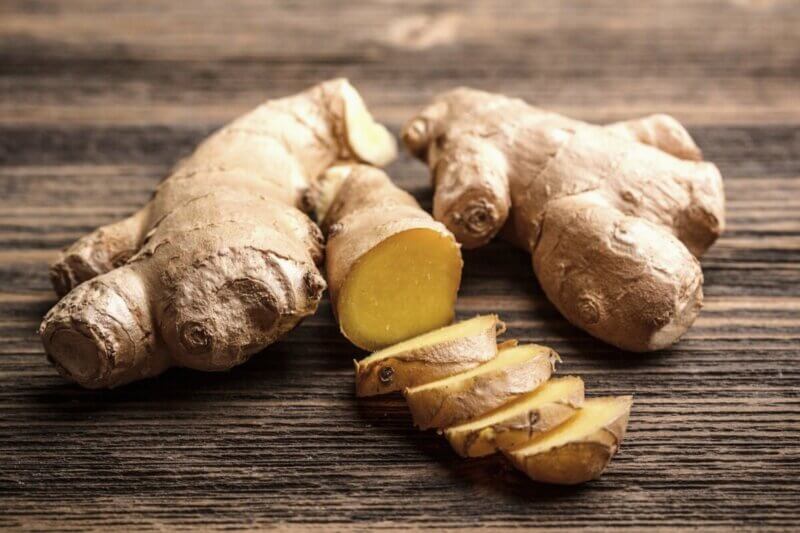Growing ginger indoors in winter
Praised by foodies and lovers of Asian cuisine, ginger is known for its culinary and medicinal properties. Grated, chopped, juiced or cut into thin strips, ginger is versatile and consumed as a spice, a beverage or an accompaniment in savory dishes as well as desserts. Spicy and aromatic, ginger is known to get blood flowing, a welcome quality to keep the chill at bay in winter.
A native of southern China, ginger (Zingiber officinale), a member of the Zingiberaceae family, is a tropical plant that thrives in warm temperatures and humidity. Other well-known spices in the ginger family include cardamom (Elettaria cardamomum) and turmeric (Curcuma longa).

The ginger plant is characterized by thick, branched rhizomes (underground stems) with brown outer skin and a fleshy, yellow center of distinctly spicy aroma. Above ground, the rhizomes generate leafy sheaths called pseudostems (false stems) that grow up to three feet high. These pseudostems unravel into 6-12 inches long, narrow, alternate leaves.
In its natural habitat, ginger develops fragrant, pale-yellow flowers with purplish edges in a cone-shaped spike from separate shorter pseudostems. However, in our cold climates, plants are less likely to blossom.
If you like the flavor of ginger, here are some tips to grow it in a container this winter.
The next time you visit the grocery store, purchase a fresh, firm and fleshy ginger root, preferably organic, with noticeable eyes or buds like those of a potato. Soak the rhizome overnight to rehydrate it before planting.
Meanwhile, gather the following material: a pot at least 12 inches in diameter with a drainage hole, 1 or 2 cups of gravel and a well-draining potting mix specifically formulated for indoor plants.
Place a layer of gravel at the bottom of the pot for good drainage. Fill two-thirds of the pot with potting mix, place the rhizome on the surface with its eyes pointing up and cover with one or two inches of potting mix. Be sure to keep the soil level one inch below the rim to facilitate watering.
Water lightly to keep the soil moist. Place the pot in a warm and humid location near a window and away from direct sunlight. Maintain light soil moisture when watering. Do not overwater.
Ginger grows slowly, but you should expect green shoots to appear in about a month. When the shoots are well developed, you can increase the frequency of watering, but always keep the soil slightly moist.
If you can germinate the rhizomes in February or March, you may be able to plant them in the ground after the danger of frost has passed when the soil is reliably warm.
Because ginger rhizomes grow horizontally, they can be harvested easily. In a few months, check for new rhizomes near the edges of the pot beneath the soil surface. You can cut a piece of rhizome, fill the gap with more potting mix and let your plant continue to grow.
It is best to consume ginger fresh to preserve its taste and beneficial properties. However, it does keep well unpeeled in the refrigerator or peeled and crushed in the freezer.
Ginger is not just delicious. It encourages efficient digestion. It contains gingerol, a major natural compound reported to possess anti-inflammatory, antiviral, antitumor, antioxidant and antiemetic effects.
An exotic indoor plant, a delicious spice and an herbal medicine all-in-one, ginger is the perfect plant to grow this winter.
(Nadie VanZandt is a University of Vermont Extension master gardener from Panton.)
